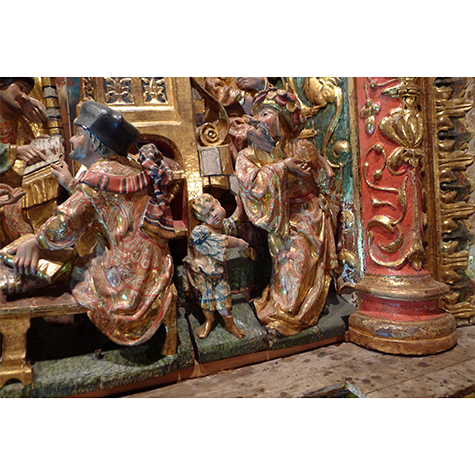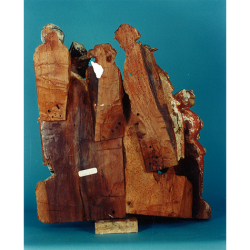Catalogue
ALTARPIECE OF THE VIRGIN OF BASCONES, VALDIVIA
SUPPORT AND ELABORATION
The altarpiece is made up of Early Renaissance style relief work in oak, walnut and pine. It must have originally had a structure onto which the compartments were first mounted before the architecture was attached.
The reliefs carved from oak and walnut are either made up of several independent panels (up to 10 in some cases), each one having one or two figures, objects or fragments of landscapes distributed over two or more horizontal planes as is normally found in the Flemish style (Adoration of the Magi, Jesus with the Doctors in the Temple, Slaughter of the Innocent, Nativity), or of a main block comprising one or more pieces to which other fragments were added to complete the required volume (Visitation, Annunciation, Circumcision), a composition found frequently in Brabant altarpieces.
Some figures had their backs hollowed out (a Wise Man) and marks of adzes and gouges can generally be seen together with the occasional saw mark.


